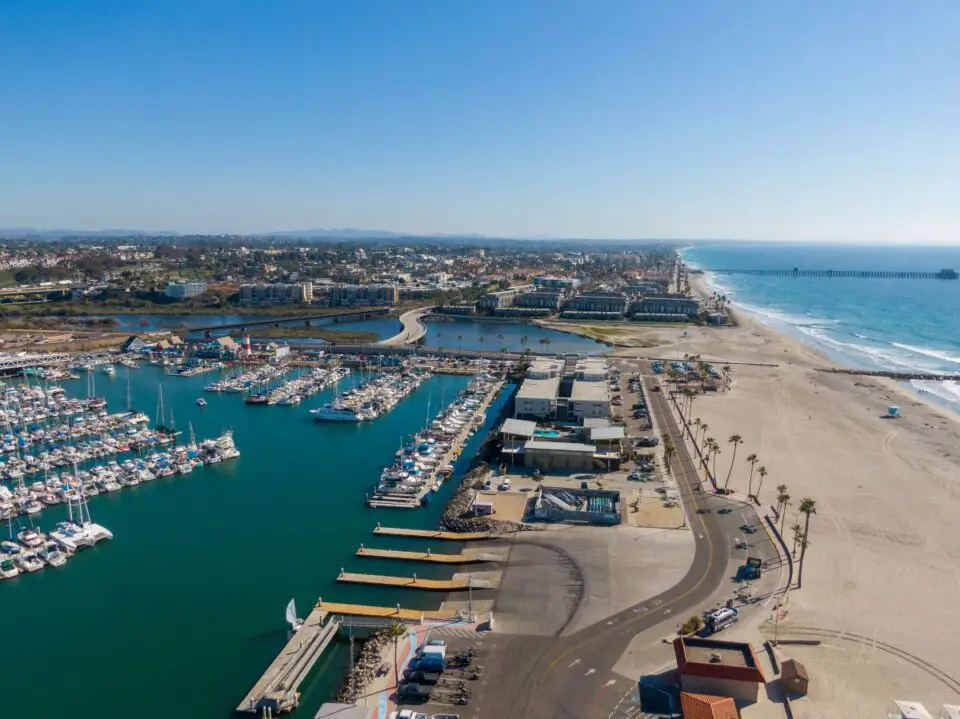OCEANSIDE — The city has accepted a $56,876 grant from the U.S. Fish and Wildlife Service to install and monitor dunes on the backend of several northern city beaches as part of a pilot project to restore habitat and retain sand.
The City Council unanimously approved the Oceanside Coastal Dune Restoration Project funds at its Dec. 20 meeting.
The project will test a nature-based sand retention solution by installing dunes to help protect the shoreline from rising sea levels and coastal flooding by elevating the beach, acting as a buffer between the ocean and local infrastructure.
According to staff, dunes could help reduce sand maintenance at parks and picnic areas, roads and pathways next to sandy beaches by trapping the wind-blown sand on the dunes instead of blowing it into the streets, parking lots and other city infrastructure. The project would restore a rare, native coastal dune habitat on the city’s beaches.
Coastal dunes are increasingly rare ecosystems consisting of wind-blown sand and native plants located landward of the annual extreme wave run-up zone along the beach.
“There are very few dunes with native plants remaining in San Diego County,” said Carolyn Lieberman, federal project officer with Fish and Wildlife, at the Dec. 20 council meeting. “The whole county used to have dunes, and there are very few places where they exist now.”
Last March, the city agreed with Rincon Consultants to create a concept for a nature-based solution to address sea level rise and sand management. In June, the city applied for Fish and Wildlife’s Coastal Program grant, which provides technical and financial assistance to coastal communities to restore and protect local habitats effectively.
The grant funds will be used to conduct public outreach to determine where the project should be placed, develop further design details, and install the project.
The dunes would be located at the mid-to-back sections of Harbor Beach in areas not subject to high tides or wave run-up except in extreme weather conditions. At North Strand Beach, the dunes would be along the back beach, alongside pedestrian and bike paths.
Fencing standing approximately 3 feet high from the ground will be temporarily used to develop the dunes as vegetation grows and will be removed once the dunes are established. The fencing will be slotted to allow sand to blow through the fence and accumulate on the dunes.
Once restored, the dunes sustain vegetation year-round and could widen over time if desired. Native vegetation will flower at various times throughout the year.
The dunes aren’t expected to be taller than four feet and could be easily removed if problematic.
The grant requires the project to be monitored and reported throughout its duration.
According to staff, agencies including the Ocean Protection Council, the California Coastal Commission and the California Natural Resources Agency are all lauding dune restoration projects as a natural method of mitigating sea level rise.
The proposed project will be shared with the Harbor and Beaches Advisory Committee at a Feb. 19 meeting before its final siting, design and construction. Public outreach will be conducted sometime in the spring or summer.
Members of the public and elected officials have generally supported the dune restoration project, but several voiced concerns about the proposed Harbor Beach location.
“Harbor Beach is the most used beach in all of North County – even its back beach area,” said Oceanside resident Carolyn Kramer. “Obviously, whoever wrote this doesn’t frequent Harbor Beach.”
The project plans to avoid frequently-used beach space at Harbor Beach, including areas that host the city’s junior lifeguard program, the annual U.S. Army Corps of Engineers dredging project, the spring Ironman competition and beach soccer championships.
Some residents suggested placing the dune project on the city’s southern beaches, where more sand is desperately needed. However, those beaches don’t have enough sand to support the project.
“Dune restoration projects are most successful in locations with ample sand resources and do not fare well in areas with limited sand, which is why this effort is focused on Oceanside’s northernmost beaches, where sand is more plentiful,” the staff report states.
Kramer and others were also concerned about the project, including sandburs, a native dune plant that produces sharp, spiky burrs that could potentially harm beachgoers.
Councilmember Eric Joyce said he supported the dune project but hoped the sandburs could be left out.
Mayor Esther Sanchez also supported the project and its funding but noted she did not want to see it installed at Harbor Beach.
“We need to maintain that space as a very active place for people to go to the beach,” she said.
The project’s total cost is expected to be somewhere approximately between $69,000 and $85,000.
In other Oceanside sand retention news, the City Council is expected to choose a design finalist from its Coastal Resilience Competition (RE:BEACH) to address its southern beaches’ severe sand erosion issues sometime in January.





1 comment
Can you imagine?
Now that dredging is required every year for 6wks or more, the only option will be to completely close the beach.
That is…huge pipes on one half of the beach, the other half the beach inaccessible due to wildlife habitat.
Plus, dune plant spiky burrs spread throughout.
Oh, I almost forgot, taxes and parking fees will need to be increased.
The crazy’s running the Oceanside asylum.